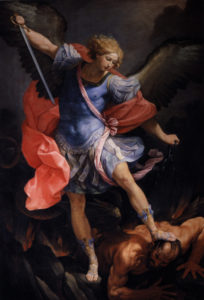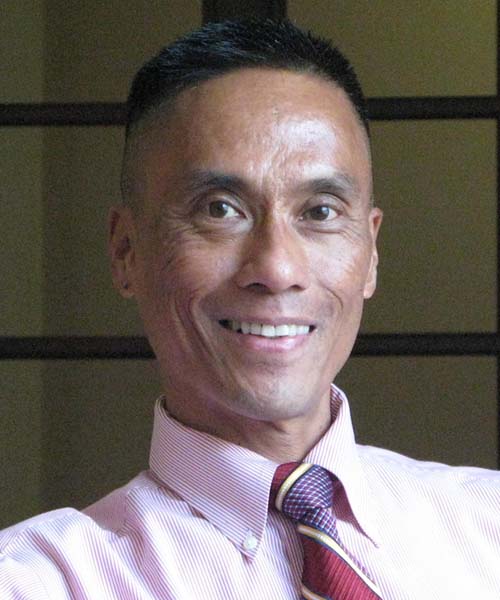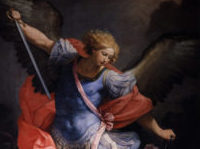I GREW UP schooled in Filipino Roman Catholic traditions by pious parents. In the late 1950s, when I was seven years old, Dad would dutifully drive the family to Mass at St. Joseph’s Catholic Church every Sunday morning. Being the devout son that I was, it was not long before I became an altar boy.
Before Mass started, my altar boy partner and I would let ourselves into the sacristy and we’d pick out the crimson cassocks and white surplices, important and fabulous liturgical vestments. Once Mass started, we solemnly processed behind the priest entering the altar and genuflected with him as the parishioners came to their feet singing the hymn “Hail Holy Queen Enthroned Above.” We carried bread and wine to the altar and shook the cluster of bells as the priest miraculously transformed the bread and wine into the body and blood of Christ. Being privy to holy, hidden church spaces for men only and allowed entry onto the sacred altar boosted my self-image. Not just any kid or adult had the privilege to partake in such rites. I also became a source of pride to my parents.
Later, as an out gay adult man, I could see how being an altar boy also offered the chance every week to don vestments that swished like a dress, and to cultivate close, secret friendships, perhaps bordering on the erotic, with other altar boys. But back then I could only imagine playing by the straight and narrow.

My altar boy experience wasn’t the only time my religious and gay identities could have faced off, but didn’t. In the church, I was surrounded by an abundance of male erotica in the form of paintings and statues of half-naked saints and the crucified Christ. As I was growing up, nothing was ever said about such depictions, but in his book Sanctity and Male Desire, Donald L. Boisvert had plenty to say. From his perspective as a young seminarian aware of his gay identity, Boisvert writes openly about his fantasies, the masculine and erotic undertones of St. Michael with his very masculine wings, the male energy of St. Francis as an activist fighting for the marginalized, St. Joseph filling the Daddy role perfectly, the boy saints and their boyish innocence, and the suffering, semi-nude martyrs with hints of S&M. Ironically, these images ultimately strengthened both Boisvert’s sexual awareness and his faith in God and the Church.
Growing up, neither priest nor parent said anything about same-sex attraction. You might suspect that homosexuality would be painted as bad from the very start of my religious upbringing. But in truth, my boyhood memories of religious morality and same-sex attraction draw a big blank. I never thought of religious garments as dress-like. I had never seen sanctified men as objects of male desire. Unlike Boisvert, same-sex erotic thoughts never crossed paths with the sacred images called up by prayers, statues, or Bible stories in my prepubescent mind. Religion was boiled down to an easy set of procedural rules to follow, prayers to recite, and creeds to subscribe to blindly. As long as you confessed your sins, went to Mass, and didn’t get a girl pregnant, you were going to heaven. With no understanding of sexuality, religion, and a priesthood rife with predatory members, my gay side and my religious side slid by each other silently like two slippery fish in the sea.
How did my sexual and my religious selves become frictionless and totally separate? I’m sure it was because growing up in a Roman Catholic, Filipino family in the 60s, there were no images to hold up as bad. When half-naked men plastered across magazines and pornographic movies became identifiable objects of evil in the eyes of the morally righteous, fearful parents, especially fathers obsessed with the masculinity of their sons, could point to these images and say, “Don’t be like that or I will beat you.”
But we lived in a Miami suburb, sheltered from the sexual iniquities of the inner city. The magazines splayed across our coffee table (and beside the toilet) were Newsweek, Liguorian, and Readers Digest. Mom and Dad were embarrassingly naïve about mainstream American culture in general. They were clueless when it came to LSD, the Doors, and Dustin Hoffman in The Graduate. Once when Mom emptied out my little brother’s pants pockets for laundry, she found a little plastic bag of fine, dried green leaves. “What is Arturo doing with oregano in his pocket?” she asked me.
In Tagalog, “He loves her” and “She loves her” are the same. Add this linguistic blurring to their naiveté and it becomes easier to understand why we never talked about same-sex attraction. Mom and Dad were oblivious even to the topics of queer uncles, old maid aunts, and “colorful” personalities such as Paul Lynde or Liberace. Flamboyant entertainers were okay and sometimes even welcomed on our TV. But talking about gay love or gay sex was as rare as talking about Ptolemaic astronomy.
I thank God for a silver lining left by this big blank: an escape from the inner conflict between gay urgings and cultural-religious morality. So many other gay men have heartbreaking stories about parents, teachers, and clergy instilling lifelong guilt over same-sex attraction. But in my case, same-sex attraction was not immoral. It was just invisible. The corollary? Soul-searching, painful coming out stories were not part of my gay development. For better or for worse, my life skipped over that gay rite of passage.
Years after my altar boy days, my gay, Filipino-American, sexual, and amorous selves developed a friendly, if not affectionate relationship with God. This relationship took its first form by imagining God as the best version of me I could think of. Now God is an awe-inspiring mystery I take comfort in. And he is my friend.

Justin Estoque serves as Co-Chair of the National Advisory Council of the Stonewall National Museum and Archives and board member of VOX Femina LA, a women’s chorus in Los Angeles. He also sings with the Gay Men’s Chorus of Los Angeles.






